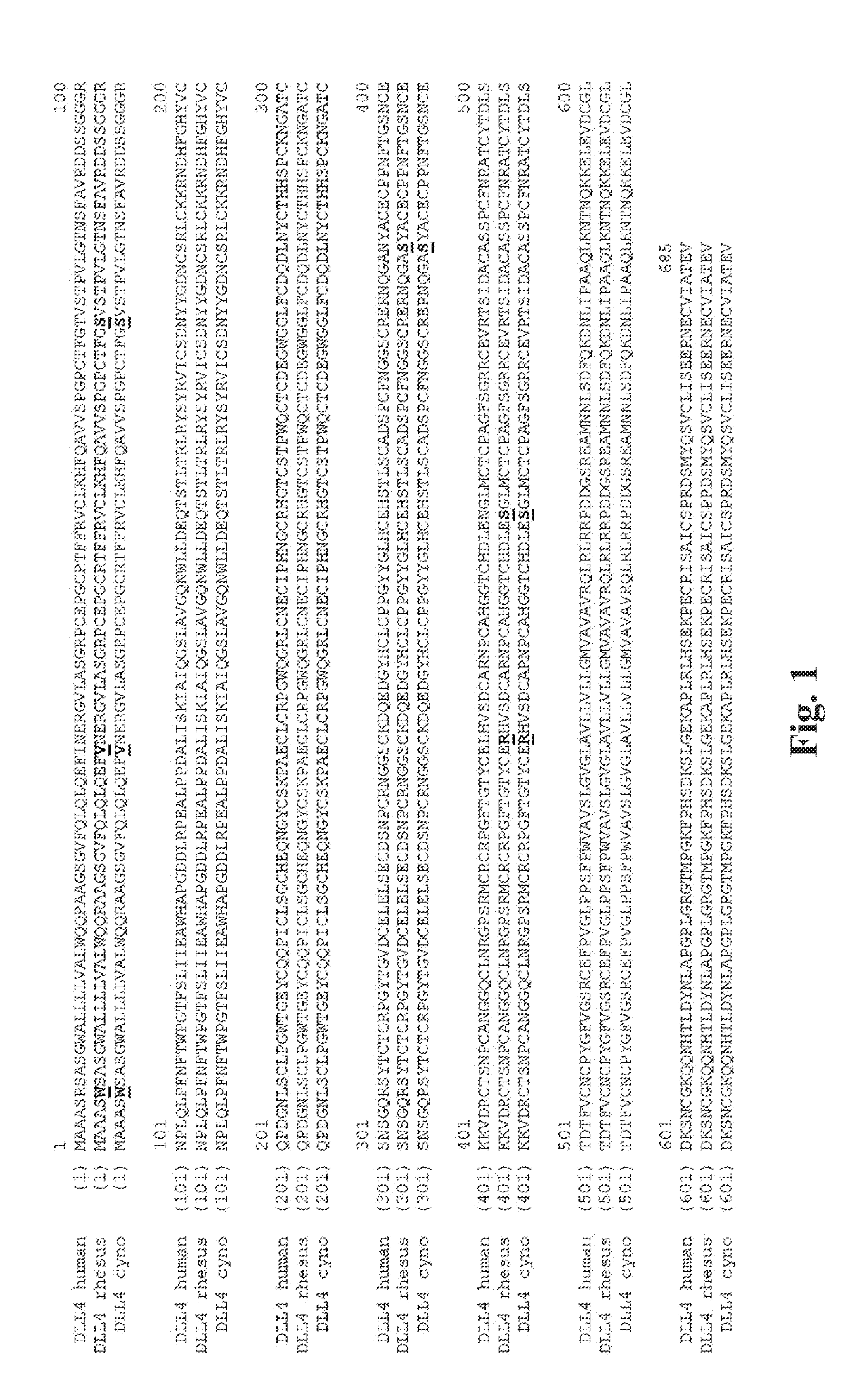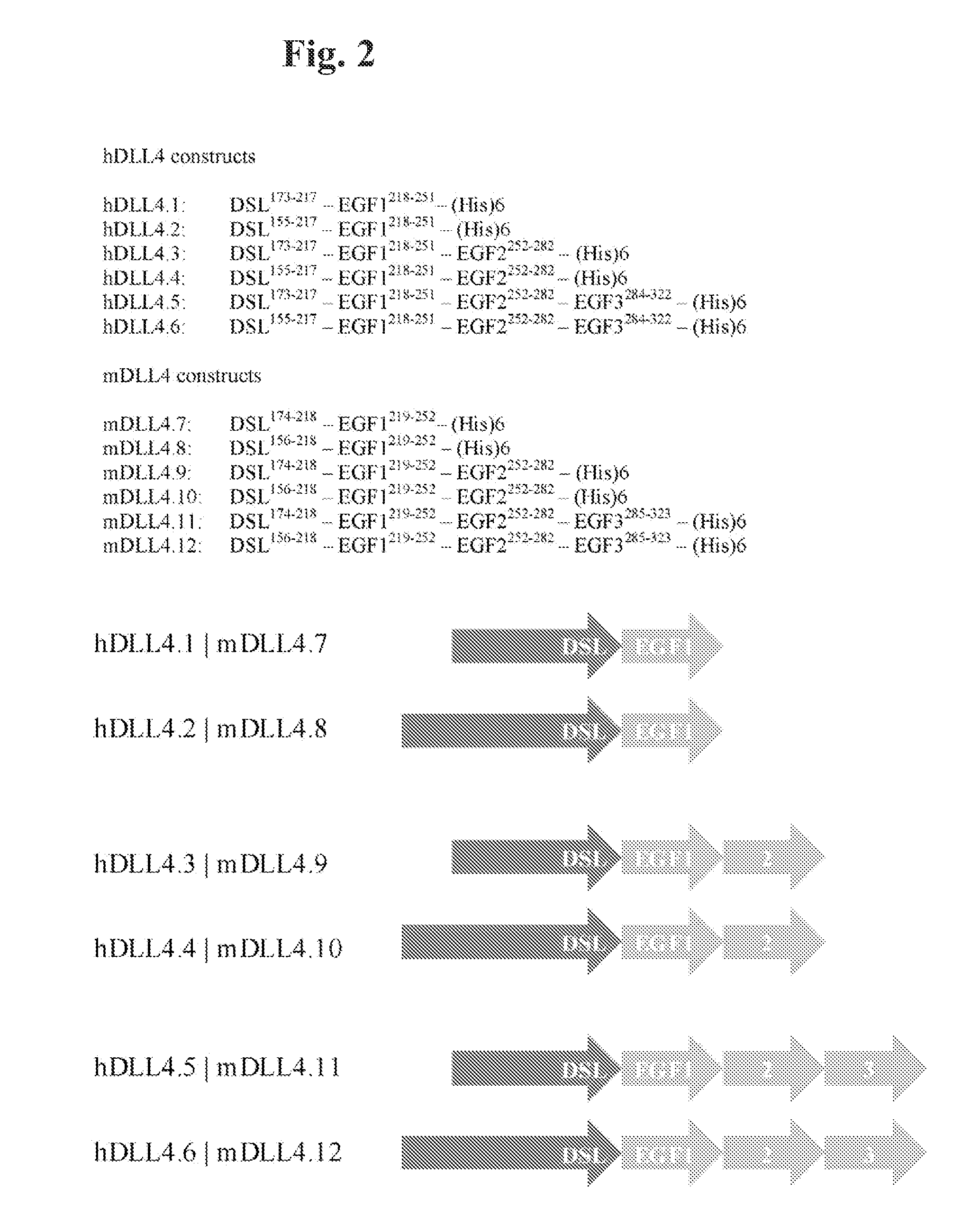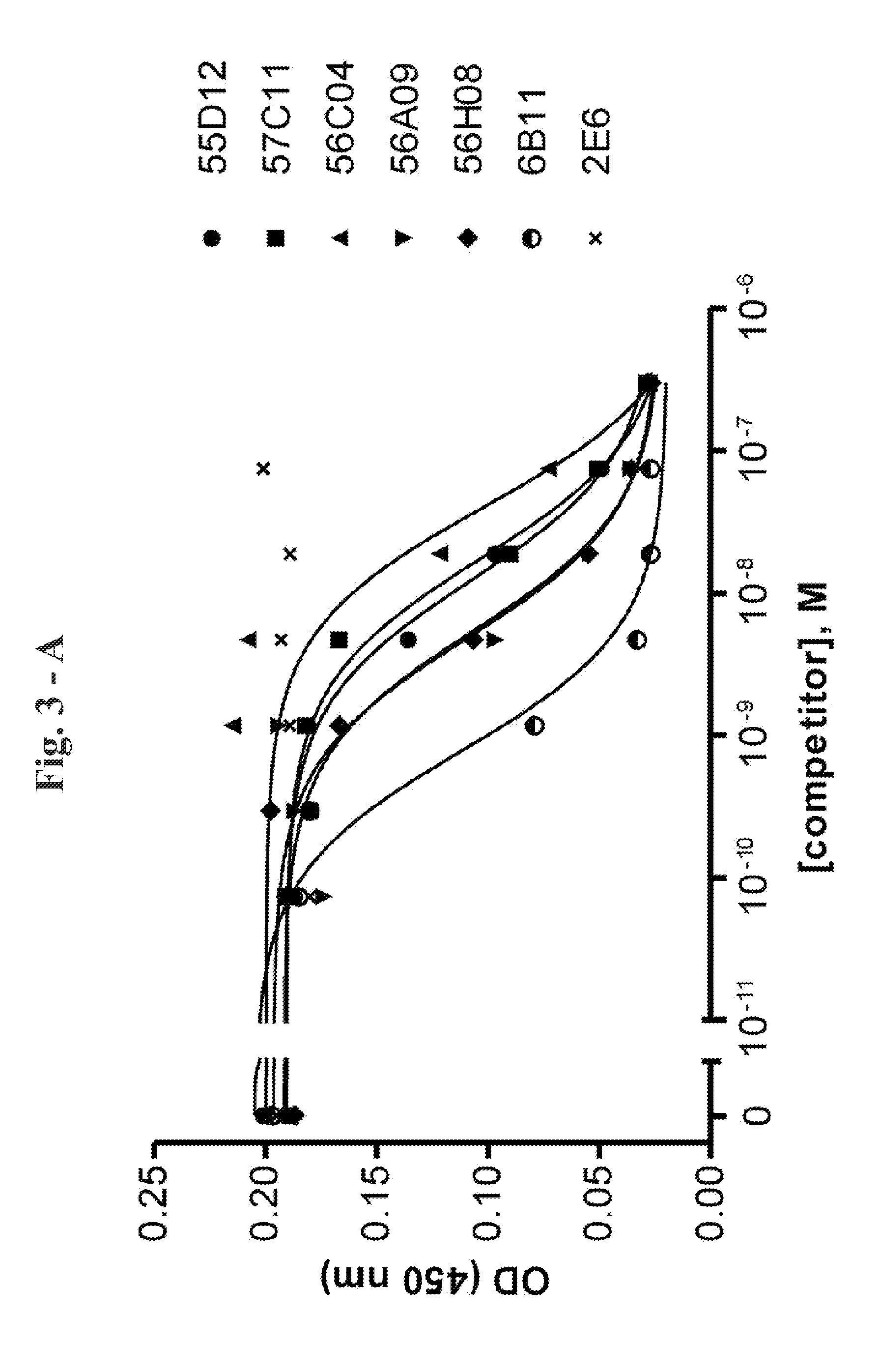Bispecific binding molecules for Anti-angiogenesis therapy
a technology of binding molecules and angiogenesis, applied in the field of human therapy, can solve the problems of high concentration, inconvenient oral administration, and excessive angiogenesis, and achieve the effect of reducing the overall manufacturing cos
- Summary
- Abstract
- Description
- Claims
- Application Information
AI Technical Summary
Benefits of technology
Problems solved by technology
Method used
Image
Examples
example 1
Immunization with DII4 from Different Species Induces a Humoral Immune Response in Llama
1.1. Immunizations
[0312]After approval of the Ethical Committee of the faculty of Veterinary Medicine (University Ghent, Belgium), 4 llamas (designated No. 208, 209, 230, 231) are immunized with 6 intramuscular injections (100 or 50 μg / dose at weekly intervals) of recombinant human DII4 (R&D Systems, Minneapolis, Minn., US). The DII4 antigen is formulated in Stimune (Cedi Diagnostics BV, Lelystad, The Netherlands). Three additional llamas (designated No. 127b, 260, 261) are immunized according to standard protocols with 4 subcutaneous injections of alternating human DII4 and mouse DII4 overexpressing CHO cells which are established as described above. Cells are re-suspended in D-PBS and kept on ice prior to injection. Furthermore, three additional llamas (designated No. 282, 283, 284) are immunized according to standard protocols with 4 intramuscular injections (100 or 50 μg / dose at biweekly inte...
example 2
Cloning of the Heavy-Chain Only Antibody Fragment Repertoires and Preparation of Phage
[0314]Following the final immunogen injection, immune tissues as the source of B-cells that produce the heavy-chain antibodies are collected from the immunized llamas. Typically, two 150-ml blood samples, collected 4 and 8 days after the last antigen injection, and one lymph node biopsy, collected 4 days after the last antigen injection are collected per animal. From the blood samples, peripheral blood mononuclear cells (PBMCs) are prepared using Ficoll-Hypaque according to the manufacturer's instructions (Amersham Biosciences, Piscataway, N.J., USA). From the PBMCs and the lymph node biopsy, total RNA is extracted, which is used as starting material for RT-PCR to amplify the VHH encoding DNA segments, as described in WO 05 / 044858. For each immunized llama, a library is constructed by pooling the total RNA isolated from all collected immune tissues of that animal. In short, the PCR amplified VHH re...
example 3
Selection of DII4-Specific VHHs Via Phage Display
[0315]VHH repertoires obtained from all llamas and cloned as phage library are used in different selection strategies, applying a multiplicity of selection conditions. Variables include i) the DII4 protein format (C-terminally His-tagged recombinantly expressed extracellular domain of human DII4 (Met1-Pro524) and mouse DII4 (Met1-Pro525) (R&D Systems, Minneapolis, Minn., USA), or full length human DII4 and mouse DII4 present on DII4-overexpressing CHO or HEK293 cells, ii) the antigen presentation method (plates directly coated with DII4 or Neutravidin plates coated with DII4 via a biotin-tag; solution phase: incubation in solution followed by capturing on Neutravidin-coated plates), iii) the antigen concentration and iv) different elution methods (non-specific via trypsin or specific via cognate receptor Notch1 / Fc chimera or anti-DII4 IgG / Fab). All selections are done in Maxisorp 96-well plates (Nunc, Wiesbaden, Germany).
[0316]Selecti...
PUM
| Property | Measurement | Unit |
|---|---|---|
| dissociation constant | aaaaa | aaaaa |
| dissociation constant | aaaaa | aaaaa |
| dissociation constant | aaaaa | aaaaa |
Abstract
Description
Claims
Application Information
 Login to View More
Login to View More - R&D
- Intellectual Property
- Life Sciences
- Materials
- Tech Scout
- Unparalleled Data Quality
- Higher Quality Content
- 60% Fewer Hallucinations
Browse by: Latest US Patents, China's latest patents, Technical Efficacy Thesaurus, Application Domain, Technology Topic, Popular Technical Reports.
© 2025 PatSnap. All rights reserved.Legal|Privacy policy|Modern Slavery Act Transparency Statement|Sitemap|About US| Contact US: help@patsnap.com



